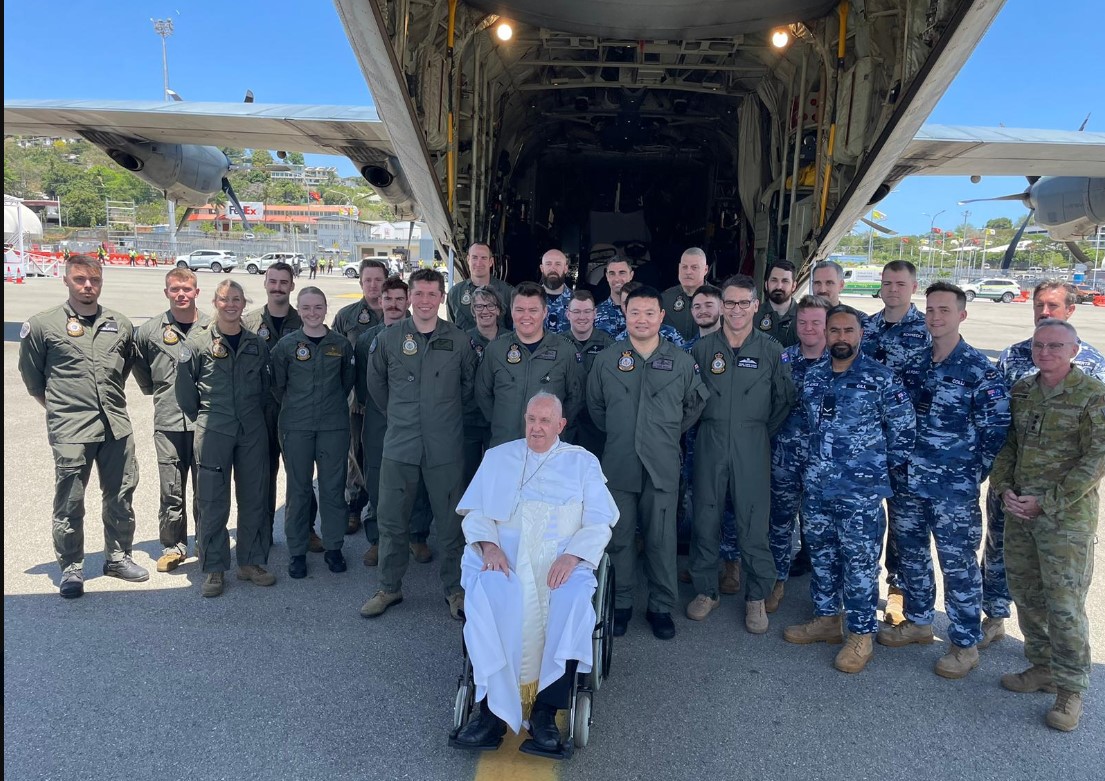
HERE is the except conversation Sesawi.Net with Mr. Widayatmo, a retired professional Indonesian diplomat who was assigned in Papua New Guinea (PNG) as a consult in the Indonesian Consulate in Vanimo in 2000-ies.
- Vanimo is one-hour flight from Port Moresby.
- There are lots of dioceses in PNG including Vanimo and Madang dioceses.
Overview
Three modes of transportations from Indonesian soil – the capital city of Papua Province’s Jayapura to Vanimo.
- 30-45 minutes long trip to fly.
- Two-hour overland trip.
- Much more hours via sea’s waterways.
Q: Why does the Pontiff Pope Francis has strong interest to visit Vanimo.
A: It has long historical background as in my tenure –the bishop of Vanimo Diocese was an Itallian missionary: Msgr. Cesare Bonivento from the Pontifical Institute for Foreign Missions (PIME). Also there is a seminary located in the heart of Vanimo where at the time scores of Indian missionaries was in charge of this priestly formation.
What is interesting to us as Indonesians is the fact that Bishop Bonivento PIME once came to Jakarta and met with KWI’s President Cardinal Julius Darmaatmadja SJ who was at the time also the Archbishop of Jakarta.
During their meeting, Bishop Bonivento PIME delivered his request that if only some Indonesian missionaries could be dispatched to serve pastoral works in Vanimo Diocese. It was said that Indian-born missionaries would soon leave to return to their native country.
KWI -as commonly practiced the protocol- would disseminate the news to religious orders’ chiefs to “groom” their potential candidate to carry out the mission.
Indonesian MSF Province finally took the initiative and dispatched Fr. Edi MSF who were among others became Indonesian MSF missionaries in PNG.
Years later on, some Indonesian missionaries also came to PNG. “They were SSpS nuns, MSC priests,” adds Mr. Widayatmo.
The second reason was at the time because Vanimo housed a very big Catholic community. “During my tenure as an Indonesian diplomat in Vanimo, there were thousands of Chinese Malaysians who at the time worked in timber plants. Other nationals were Australians, Asians, and our fellow fugitive Indonesians.”
Repatriated
The diplomat also tells Sesawi.Net that once he was assigned by Jakarta to join a special trip to bring home at least 60 Indonesian Papuan families from Vanimo to Merauke – the southeastern tip of Papuan Indonesian territory.
“The trip took almost 4 days and 4 nights trip using Maroka Ehe ship owned by Indonesian Merauke Regency,” says the former diplomat to Sesawi.Net.
The reason why this fugitive Papuans to return to Indonesian soil was just simple. It was because Merauke District Chief was from their ethnic group and they were from the same village.
Q: As an Indonesian diplomat in Vanimo-based Indonesian Consulate during a political volatile time with PNG, what is the most interesting story behind all news appearing in mainstream media in Indonesia?
A: Thousand local indigenous Papuans fled Indonesian territory during the so-called “PEPERA” – (Penentuan Pendapat Rakyat) or The Act of Free Choice – Determination of the People’s Opinion. (Additional fact sheet: Pepera was a controversial plebiscite held between 14 July and 2 August 1969 in which 1,025 people selected by the Indonesian military in Western New Guinea voted unanimously in favor of Indonesian control.)
But some 63 Indonesian Papuan families wanted to return home to their native soil – not via the nearest borderline between Indonesian-PNG territory to Jayapura, but via Merauke. “It was simply because Merauke District chief came from their ethnic family.”
“That’s why, the repatriation”scheme was done by sailing for 4 nights and 4 days by Merauke’s ship. Actually they wanted to return home as long as their political aspiration would be fulfilled,” he adds.
Borderline area between Papua Indonesian and PNG stretches almost 750 km and there is no “tangible” barriers between the two countries except some stone-made “signposts” erected by the two parties.